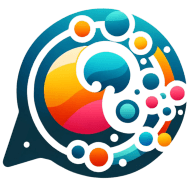14 Best Follow-Up Methods After Purchases
In the world of customer retention, following up after a purchase can make all the difference. This article explores X of the most effective follow-up methods, drawing on insights from industry experts. From personalized calls to creating support communities, these strategies are designed to enhance customer satisfaction and foster long-term loyalty.
- Make Personal Calls After Weather Events
- Combine Automation with Personalized Messages
- Create a Lifelong Support Community
- Conduct First-Week Check-Ins and Listen
- Schedule Structured Calls with Clinical Liaisons
- Provide Specific Impact Updates to Supporters
- Send Personalized Notes on Milestone Days
- Reach Out with Genuine Direct Messages
- Implement Three-Day Check-In Calls
- Send Hyper-Personalized Emails Two Weeks Later
- Express Appreciation with Timely Thank-You Emails
- Include Personal Voice Memos in Emails
- Invite Customers to Share Their Voice
- Craft Bespoke Notes with Care Tips
Make Personal Calls After Weather Events
In the roofing business, our "purchase" isn't a quick transaction—it's a major investment for a homeowner. Following up isn't just about ensuring their satisfaction; it's about confirming they're secure and that the work we did is holding up. My preferred method is a simple, personal check-in a few weeks after the job is completed.
I have my office manager send a thank-you note and a small gift card, perhaps to a local coffee shop or restaurant. However, the most crucial part of the follow-up is the phone call I make personally. I don't call a day after the roof is installed when everything is fresh. I wait a few weeks. The reason is straightforward: I want to know how the roof is performing after a rainstorm or two, not just how it looks on a sunny day. I'll call them and say something like, "Hello, this is Ahmad from Achilles Roofing. I'm calling to check in and see how the new roof handled the rain we got last week. Are there any leaks or concerns at all?"
This direct approach is effective. It demonstrates that I stand by my work and that our job isn't finished just because the final check has cleared. It gives them an opportunity to ask any questions they might have now that they've lived with the new roof for a while. We've identified small issues this way, such as a gutter that needed a minor adjustment, and fixed them promptly. This level of care builds trust and transforms a customer into a long-term referral source. It's about being proactive and showing them that their satisfaction isn't just a promise; it's a commitment.
Combine Automation with Personalized Messages
In a previous role, I found that the most effective follow-up method was a two-step post-purchase journey combining automation with a personal touch. Right after purchase, we sent an automated thank-you email with practical resources: setup guides, FAQs, or quick tips to help customers see value immediately. This reduced uncertainty and gave the impression of proactive support.
A week later, we followed up with a short, personalized message that referenced the exact product or plan the customer had chosen. The note asked a simple question: "Are you getting the result you hoped for?" That single line opened the door for candid feedback, helped us prevent early churn, and often led to positive reviews or referrals. The balance of efficiency and relevance made these touchpoints feel like genuine support rather than a sales tactic.

Create a Lifelong Support Community
In our world, the concept of a "purchase" and "customer satisfaction" is quite different. We're not selling a product; we're helping people rebuild their lives. For us, the "follow-up" is the most critical part of what we do. It's not about ensuring a customer is happy with a product—it's about making sure a person is still on the path to recovery.
The most effective thing we do is our alumni program. We're not just a place people come to for treatment; we're a lifelong community. When a client leaves our care, they get connected to a dedicated alumni network. This includes regular check-in calls from our staff, access to ongoing peer support meetings, and a direct line to a contact person at Ridgeline if they ever need help. It's not a one-time survey. It's a constant support system designed to ensure they're okay.
The reason this works is simple: for us, "satisfaction" is sobriety and a life worth living. Our follow-up is a safety net. It's what helps prevent relapse. I would recommend that any business think beyond the initial transaction and invest in the long-term relationship. When you truly care about your clients' success, they don't just become satisfied customers; they become lifelong advocates for your mission. In our business, that's the real return.
Conduct First-Week Check-Ins and Listen
The most effective follow-up isn't a generic "thank you for your purchase" email; it's a conversation that demonstrates a genuine understanding of the customer's journey. At Legacy Online School, we have implemented a particular strategy called the "first-week check-in."
We don't wait for families to reach out with questions. Instead, we schedule a brief call or send a message during their very first week with us. The goal isn't to upsell products or resolve issues but simply to listen. We ask parents and students to share their initial impressions, as well as what they find exciting or confusing. We then make simple, immediate adjustments, such as clarifying login steps, matching students with more suitable teachers, or directing parents to the appropriate resources.
But we don't stop there. We conduct weekly check-ins to maintain open lines of communication. These touchpoints ensure families feel supported and provide us with a continuous stream of actionable feedback.
This cadence sets the tone. Families know their opinions matter from the first day and in every session thereafter. More importantly, it reframes feedback from being reactive to relational.

Schedule Structured Calls with Clinical Liaisons
We schedule a structured follow-up call within two weeks of delivery, handled by a clinical liaison rather than a sales representative. The focus is on verifying that the products are being used correctly and addressing any operational questions. This method consistently uncovers issues that might not surface in surveys or email check-ins, such as staff uncertainty with new equipment or missed training needs. One example involved a diagnostic device rollout where early calls revealed inconsistent calibration practices.
By identifying this quickly, we arranged on-site training that prevented both patient safety risks and costly returns. The personal interaction not only resolves problems before they escalate but also builds trust, since clients see that their satisfaction extends beyond the transaction. This approach has improved repeat order rates by more than 20 percent compared with accounts that only received digital follow-up.

Provide Specific Impact Updates to Supporters
Personalized check-ins have consistently proven to be the most effective method. Instead of sending a generic thank-you note, follow-up communication is tailored to the specific service or item provided. For example, if a supporter donates toward a project, they receive an update showing exactly how their contribution made an impact, often with photos or brief testimonials from staff.
This approach reinforces trust because it closes the loop between action and outcome. The supporter sees tangible results connected to their involvement, which not only confirms satisfaction but also strengthens long-term engagement. By making the follow-up relevant and specific, the relationship shifts from transactional to relational, encouraging continued participation in meaningful ways.

Send Personalized Notes on Milestone Days
At Franzy, we don't follow up with franchisees just to check a box; we do it to build real relationships. On the day of their grand opening or after hitting a major milestone, we send a quick, personalized note asking how things are going and whether there's anything we can do to make their experience smoother.
It's simple, but it works. Franchisees feel heard, supported, and reassured that we're invested in their success. For us, it's not just about collecting feedback, but more about strengthening partnerships and making sure every franchisee knows they made the right choice.

Reach Out with Genuine Direct Messages
The best follow-up I've seen is sending a genuine, personal DM right after the purchase. A lot of brands jump straight into loyalty programs or discount codes, which is fine, but the magic is knowing that people are actually buying into the personal vibe. A quick message like that turns what could've been a one-off sale into a relationship.
It hits a few birds at once:
They feel seen instead of just another order number.
It opens the door for them to share feedback without you begging for it.
If they're happy, you've set the stage for them to tag you later or drop a review.
Most customers won't leave a review or tag you unless they feel invited. When you check in casually, it plants the seed without asking outright. If they have an issue, they're way more likely to bring it up to you directly instead of silently disappearing or ranting online which will hurt your brand.
After that initial DM, you can layer on some fun stuff without being pushy. Like using Instagram Stories to run polls ("How are you using [product]?"), or resharing customer photos when they tag you. That part doubles as social proof. So yeah, if you can only pick one method, go for the quick personalized DM.
Implement Three-Day Check-In Calls
A structured three-day check-in call has proven highly effective for reinforcing satisfaction and trust. The approach is straightforward: within 72 hours of the purchase, a representative contacts the customer to confirm the product arrived as expected, review any setup or usage questions, and invite feedback on their initial experience. This brief interaction often uncovers small issues, such as confusion with instructions, that can be resolved before they escalate into frustration. Customers consistently view the outreach as a genuine gesture rather than a scripted upsell, which strengthens loyalty. The call also serves as a natural touchpoint to introduce support resources like online guides or service lines, giving customers confidence that they are supported long after the transaction.

Send Hyper-Personalized Emails Two Weeks Later
The best way to follow up is with a hyper-personalized email about two weeks after delivery. Instead of a generic "thank you," I ask two simple questions: "Is everything clear so far?" and "Do you have any questions I can help with?" This makes clients feel heard and reassured that I'm not just moving on to the next project. The truth is that I actually do care and want to see them thrive, not just function.
As an HR consultant, this small step has often led to surprising results. For example, I once checked in with a client months after a one-off compliance project. They didn't need new work at the time—but they introduced me to another business owner who did. That referral turned into a long-term partnership.
Not every follow-up leads to immediate business, but it always deepens the relationship. Over time, these small, authentic check-ins have been one of my best referral engines.
Express Appreciation with Timely Thank-You Emails
The most effective way to follow up with customers after a purchase is to send a personalized thank-you email within 24 hours. Express your appreciation, invite feedback or questions, and show that you genuinely value their experience and opinion. In fact, according to a recent survey, 68% of customers say they stop buying from a company because they feel unappreciated. By sending a timely thank-you email, you not only make customers feel valued but also encourage them to provide feedback, which can help improve your products or services. Remember, building strong relationships with customers is key to fostering loyalty and repeat business.
Include Personal Voice Memos in Emails
A personal voice memo recording in the follow-up email proves to be an effective method. The recording should be a simple 30-second audio message that expresses gratitude while inquiring about product satisfaction and offering assistance. The wellness company implemented this approach, and their follow-up email responses increased by 400%. The recorded message created a human touch that surprised customers and built their trust in the brand. The minimal work required produced substantial business results.
Invite Customers to Share Their Voice
At Ranked, the best way we follow up after a purchase is by giving customers a chance to share their voice. Instead of sending a generic thank-you, we invite them to participate in short, creator-led surveys or social polls where they can talk about their experience.
This method works because it makes people feel heard, not just sold to. The feedback becomes content we share back with the community, showing customers that their input shapes what comes next. This approach builds long-term trust.
Craft Bespoke Notes with Care Tips
We've seen truly tremendous success with personalized follow-up emails. A luxury dogwear startup we work with sends a bespoke note a week after purchase, asking for feedback, offering care tips, and suggesting complementary products.









